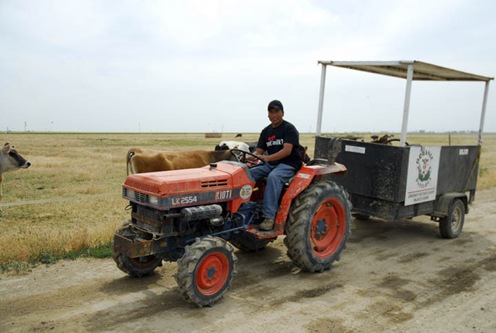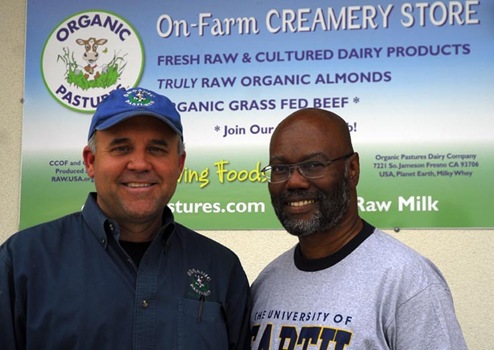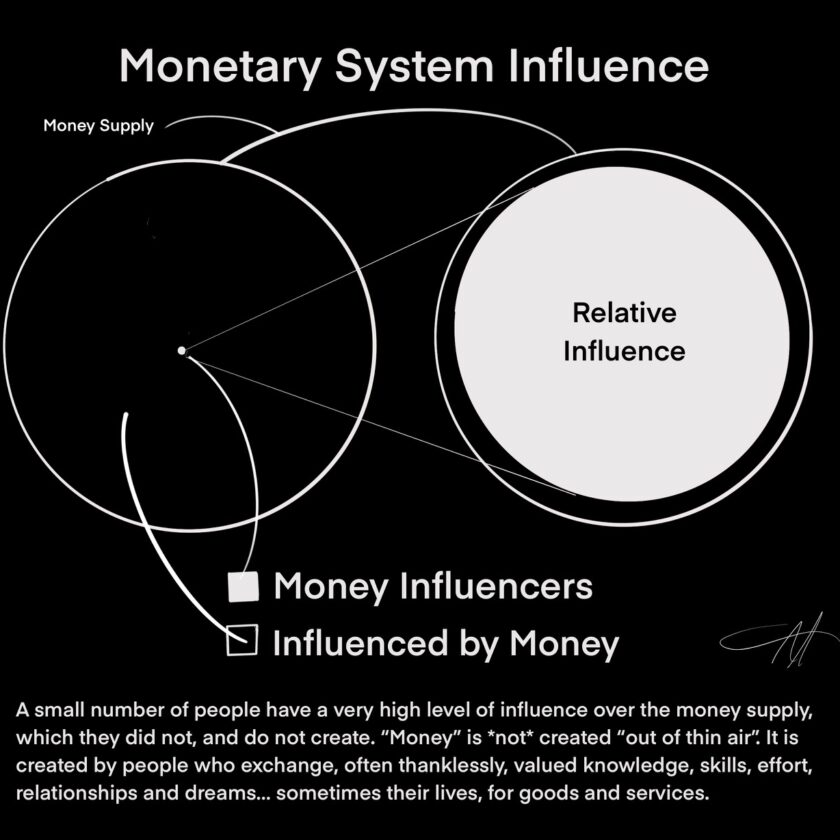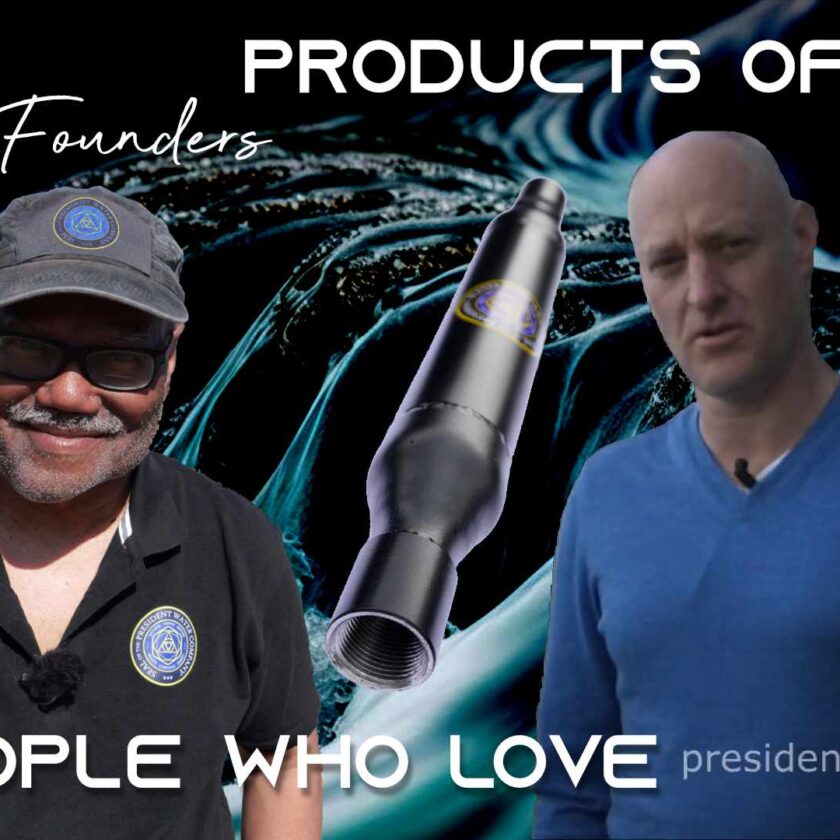My trip to Northern California took me to many worlds in one world. I witnessed the seductive possibilities of San Francisco, a city I have always enjoyed visiting, and have spent precious too little time exploring…
journeyed to the hinterlands of Fresno in California’s San Joaquin Valley…
then enjoying the cosmopolitan charm of Sacramento, the state capital.
In those seven days I interviewed remarkable people and learned of amazing technology, some of it cutting edge, some old as time itself, and some, simply beyond time.
The fruits of that trip are now ripening and falling off the tree for public consumption. It started with my interview on Galactic First Contact, released last week on Talk For Food, with Sheldan Nidle (www.paoweb.com). It continues this week with Mark McAfee, founder of Organic Pastures Dairy (www.organicpastures.com), located in Fresno.
There are more, but for now, let’s talk about milk.
Organic Pastures is the largest raw (meaning unpasteurized) organic dairy in the world. This statement sounds far more impressive than it should be, when you consider what raw milk does for us. It is real food that contains:
- Beneficial bacteria
- Enzymes
- Real vitamin A & D
Raw milk is living food. Indeed, it contains microscopic life forms that play an important and designed role in the maintenance of the ecological balance inside the human body. Pasteurization kills off this population, even organic pasteurized milk will be devoid of these health giving and sustaining life forms. Consider the opportunity to sustain or restore health that is missed each time we drink milk that contains no beneficial life in it.
Pasteurization is necessary due to the way that milk is routinely processed, and the degree to which commercial dairies rely on antibiotics to control pathogens… that they don’t effectively do. In a balanced ecosystem, pathogen control is automatically taken care of. Organic Pastures is a balanced ecosystem. Even the cow pies are pathogen free. Just walk among Bessie and Myrtle, real California Happy Cows, and you’ll be amazed, as I was, of the pungent smell we’ve grown accustomed to associating with dairies, that isn’t there.
With that said, if you go out and look for raw milk, which isn’t even available in all 50 states, you’ll be greeted with a stern warning on the label, advising that it may contain bacteria that is harmful to your health.
On the other hand, if you buy regular “milk” that’s available anywhere, the label won’t tell you that it is devoid of life and health sustaining bacteria that your body absolutely needs. The label also won’t tell you that the vitamin A & D that have been added, is synthetic, not natural. Synthetic vitamins don’t function in the way natural ones do.
Lastly, the conventional label won’t tell you about the pathogens that may yet survive the pasteurization process, such as listeria and e coli. Now, the presence of such bacteria would not be a concern if we were, on the whole, homeostatic, or in balance. Beneficial bacteria would be sufficiently present within the digestive tract to regulate any intruders that are introduced. But antibiotics prescriptions kill off aerobic bacterial populations, leaving us with an overgrowth of the anaerobic. This imbalance starts a cascade of others, and an steady decline in immune system effectiveness.
I’m passing on what I learned from Mark, a veritable encyclopedia of understanding about the place and role that raw milk plays in the care and feeding of human beings… not only today, but throughout history.
Cows and goats have been an integral part of many cultures that we’d consider “primitive,” with the exception that health was commonplace, where today, it’s becoming the exception to the rule.
I have more people and technologies to cover, but let’s get this one up.
Listen
You can learn more about raw milk by tuning into my conversation with Mark McAfee on Talk for Food.
http://www.webtalkradio.net/content/category/4/14/33/











Where can I buy milk from cows with A2 protein? I live in Southern California.
Hi Carri,
I’m not familiar with the term A2 protein. You can get raw unpasteurized milk throughout California. I’d suggest that you visit http://www.rawmilk.com where you can find a source near you. Organic Pastures brand is available in health stores throughout the state. You can also contact them by email or phone (http://www.organicpastures.com) and very likely get your specific question on A2 protein answered.
Best wishes,
Adam…
Links about A1 and A2 milk.
http://tinyurl.com/5kzs2r
http://tinyurl.com/6xwwr3
http://www.guernsey.net/~wgcf/PageMill_R
Adam,
Thanks for spreading the word about the virtues of drinking RAW milk.
And did you know that their is some research indicating that different breeds of dairy cows produce milk that is healthier than others breeds.
For example the black and white spotted Holstein breed that most people are familiar with produces milk that contains the A1 beta casein protein.
While other breeds such as Guernsey and to a lesser extent the Jersey dairy breed produces milk that contains A2 beta casein protein.
And their is apparently a very BIG difference between the A1 and A2 beta casein protein.
Some people believe that drinking milk that contains the A1 beta casein protein can be very harmful for some people.
While drinking milk that contains the A2 beta casein protein is usually well tolerated by most people.
As the human female produces milk that contains A2 beta casein protein as do goats and sheep. And as I mentioned earlier some breeds of dairy cows such as the Guernsey produce milk that contains the A2 beta casein protein.
So throughout human history most of the milk that humans drank came from animals that produced A2 beta casein protein containing milk.
But in modern times we began to drink milk that contained the A1 beta casein protein. And on top of that we make that milk even worse by pasteurizing it.
In the 1900’s more farmers began converting their dairy herds to the Holstein breed because they produce more gallons of milk per day than do other breeds.
And the Holstein cow produces a higher percentage of the A1 beta casein protein containing milk than the do other breeds of dairy cows.
And A1 beta casein is seemingly not tolerated by some people. As most humans never drank milk that contained the A1 beta casein protein.
Historically humans almost always drank milk that came from animals that produced milk that contained the A2 beta casein protein.
So therefore it may be healthier for humans to drink RAW goats milk or RAW cow milk that came from a breed that produced A2 beta casein milk such as the Guernsey breed.
And by the looks of that photo with the tractor those are the Jersey breed of dairy cows. Which produces a higher percentage of A2 beta casein than does the Holstein.
Adam,
Thanks for spreading the word about the virtues of drinking RAW milk.
And did you know that their is some research indicating that different breeds of dairy cows produce milk that is healthier than others breeds.
For example the black and white spotted Holstein breed that most people are familiar with produces milk that contains the A1 beta casein protein.
While other breeds such as Guernsey and to a lesser extent the Jersey dairy breed produces milk that contains A2 beta casein protein.
And their is apparently a very BIG difference between the A1 and A2 beta casein protein.
Some people believe that drinking milk that contains the A1 beta casein protein can be very harmful for some people.
While drinking milk that contains the A2 beta casein protein is usually well tolerated by most people.
As the human female produces milk that contains A2 beta casein protein as do goats and sheep. And as I mentioned earlier some breeds of dairy cows such as the Guernsey produce milk that contains the A2 beta casein protein.
So throughout human history most of the milk that humans drank came from animals that produced A2 beta casein protein containing milk.
But in modern times we began to drink milk that contained the A1 beta casein protein. And on top of that we make that milk even worse by pasteurizing it.
In the 1900’s more farmers began converting their dairy herds to the Holstein breed because they produce more gallons of milk per day than do other breeds.
And the Holstein cow produces a higher percentage of the A1 beta casein protein containing milk than the do other breeds of dairy cows.
And A1 beta casein is seemingly not tolerated by some people. As most humans never drank milk that contained the A1 beta casein protein.
Historically humans almost always drank milk that came from animals that produced milk that contained the A2 beta casein protein.
So therefore it may be healthier for humans to drink RAW goats milk or RAW cow milk that came from a breed that produced A2 beta casein milk such as the Guernsey breed.
And by the looks of that photo with the tractor those are the Jersey breed of dairy cows. Which produces a higher percentage of A2 beta casein than does the Holstein.
Links about A1 and A2 milk.
http://www.maternity.org.nz/pdfs/THE%20A1%20vs%20A2%20MILK%20CONTROVERSY.pdf
http://www.google.com/search?num=100&hl=en&lr=&as_qdr=all&q=a2+milk+casein++a1+2008&btnG=Search
http://www.guernsey.net/~wgcf/PageMill_R